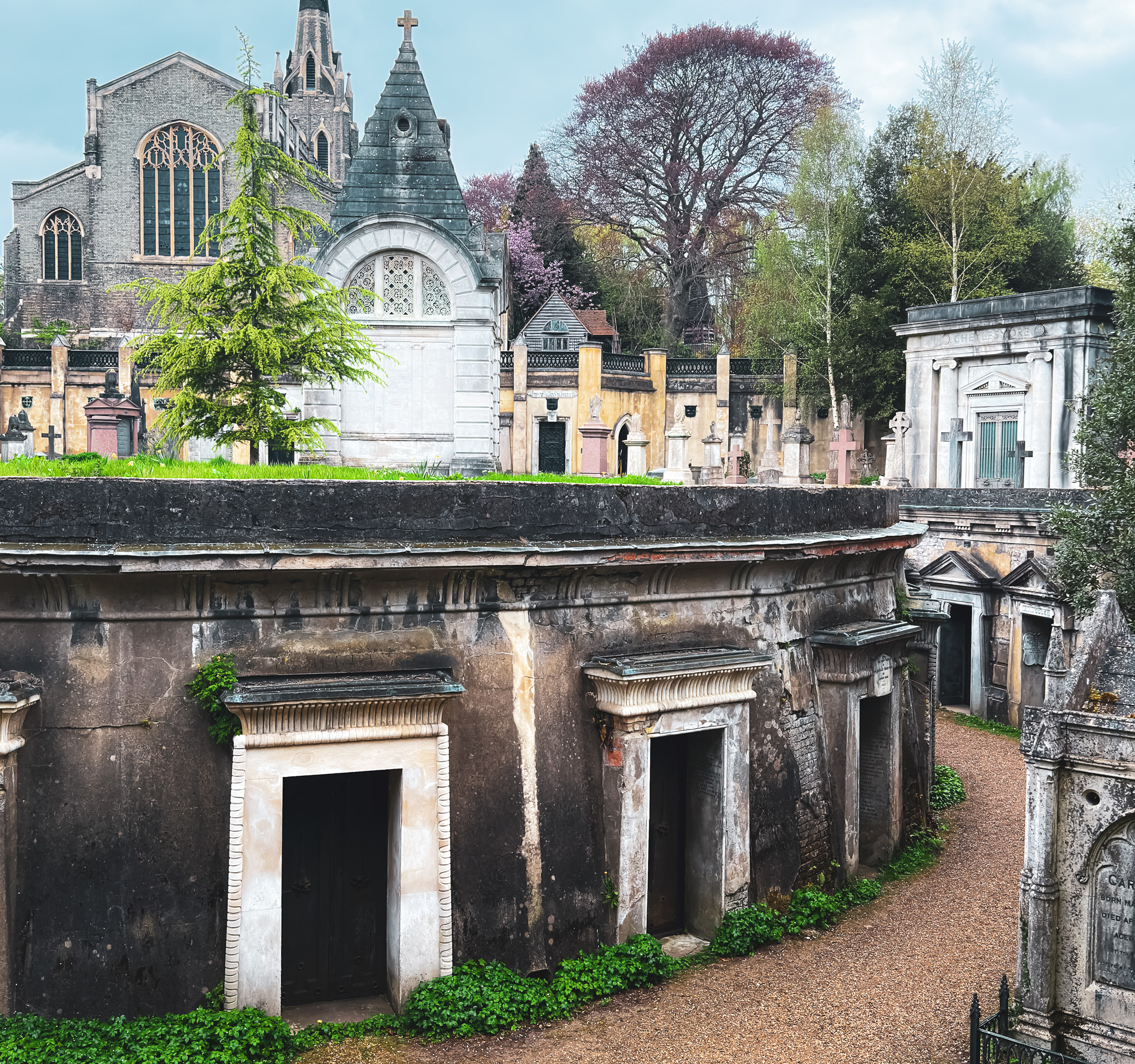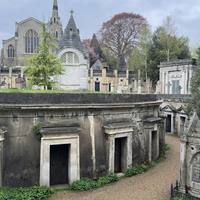There’s something about cemeteries that stirs a peculiar fascination. Maybe it’s the quiet, maybe the symbolism, or maybe it’s our morbid curiosity with the dead. A pull to walk among the monuments of lives once lived, to read names and dates and wonder about the stories in between. Highgate Cemetery, nestled in the leafy hills of North London, feeds that curiosity with elegance, drama, and no small amount of Victorian flair.
Tucked into the slope of Highgate Hill, the cemetery is more than just a burial ground, it’s a beautifully haunting place where history, art, nature, and mystery converge. Sprawling over wooded paths and filled with crumbling tombs, Gothic chapels, and ivy-covered stone, it offers a day out that is equal parts moving, magical, and memorable.
We visited Highgate on a warm spring morning, the kind that practically insists you slow down and take your time. The sky was clear, the air soft, and the trees lining the narrow streets of Highgate Village were just beginning to burst with new green. With coffees in hand, we made our way from Archway Station, enjoying the peaceful walk uphill, we cut into Waterlow park, and past the pond. Just on the other side of the park, the cemetery gates greeted us like something out of a novel or movie. They were ornate, a little weather-worn, and half-shaded by tall trees.
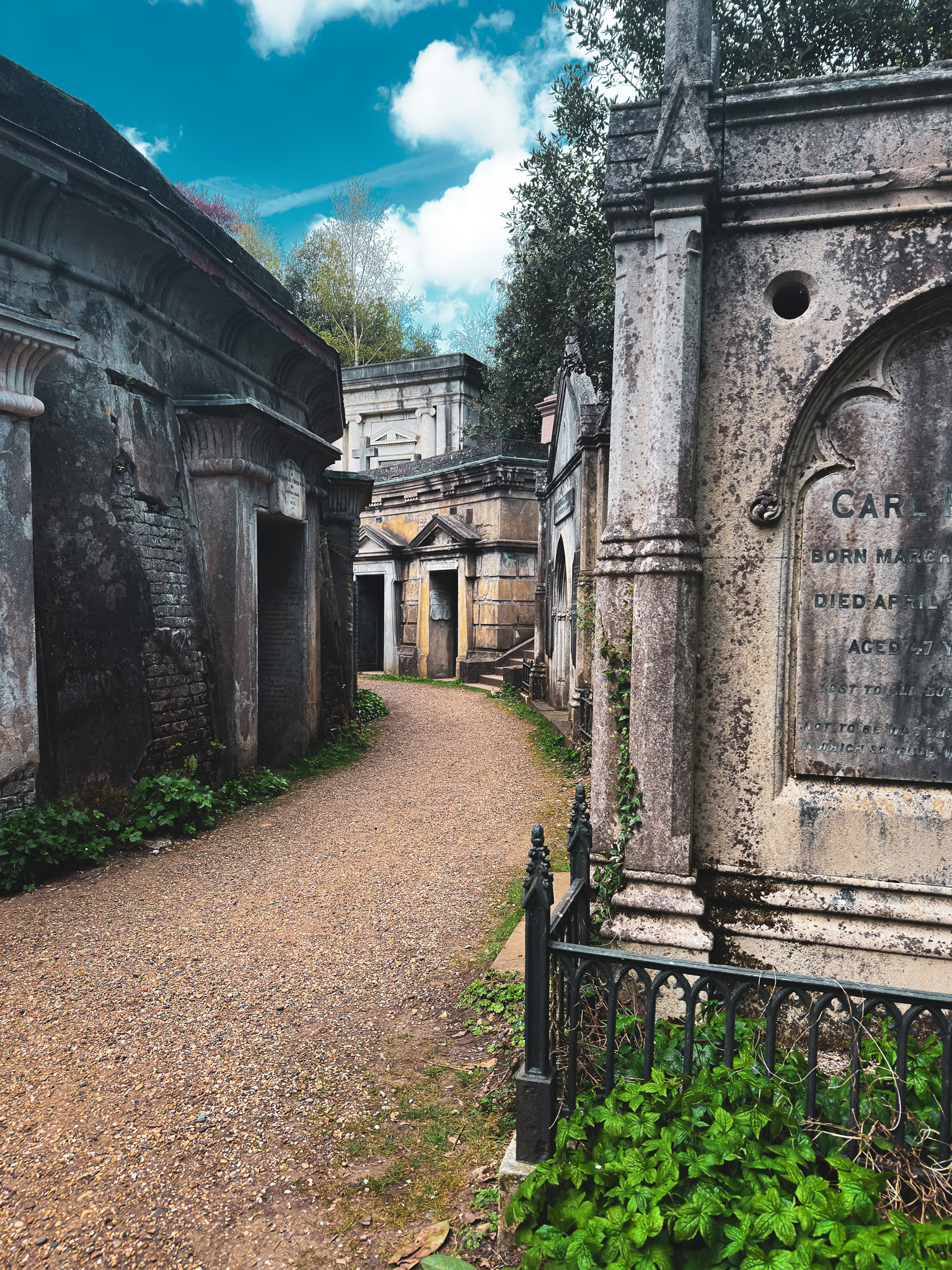
The history is immediate and immersive. Opened in 1839, Highgate was part of a bold initiative to solve one of London’s growing crises: overcrowded, unsanitary city graveyards that could no longer contain the city’s dead. But Highgate quickly became far more than a practical solution—it evolved into a showcase of Victorian attitudes toward death, memory, and social standing.
In a time when mourning was a highly ritualized part of life, the cemetery became a canvas for expressing grief and status. Wealthy families commissioned elaborate tombs and mausoleums that reflected not just their sorrow, but their taste, ambition, and cultural values. The result was a landscape as ornate and expressive as any city neighborhood. This was a place where death was not hidden away, but given space to be both grand and public.
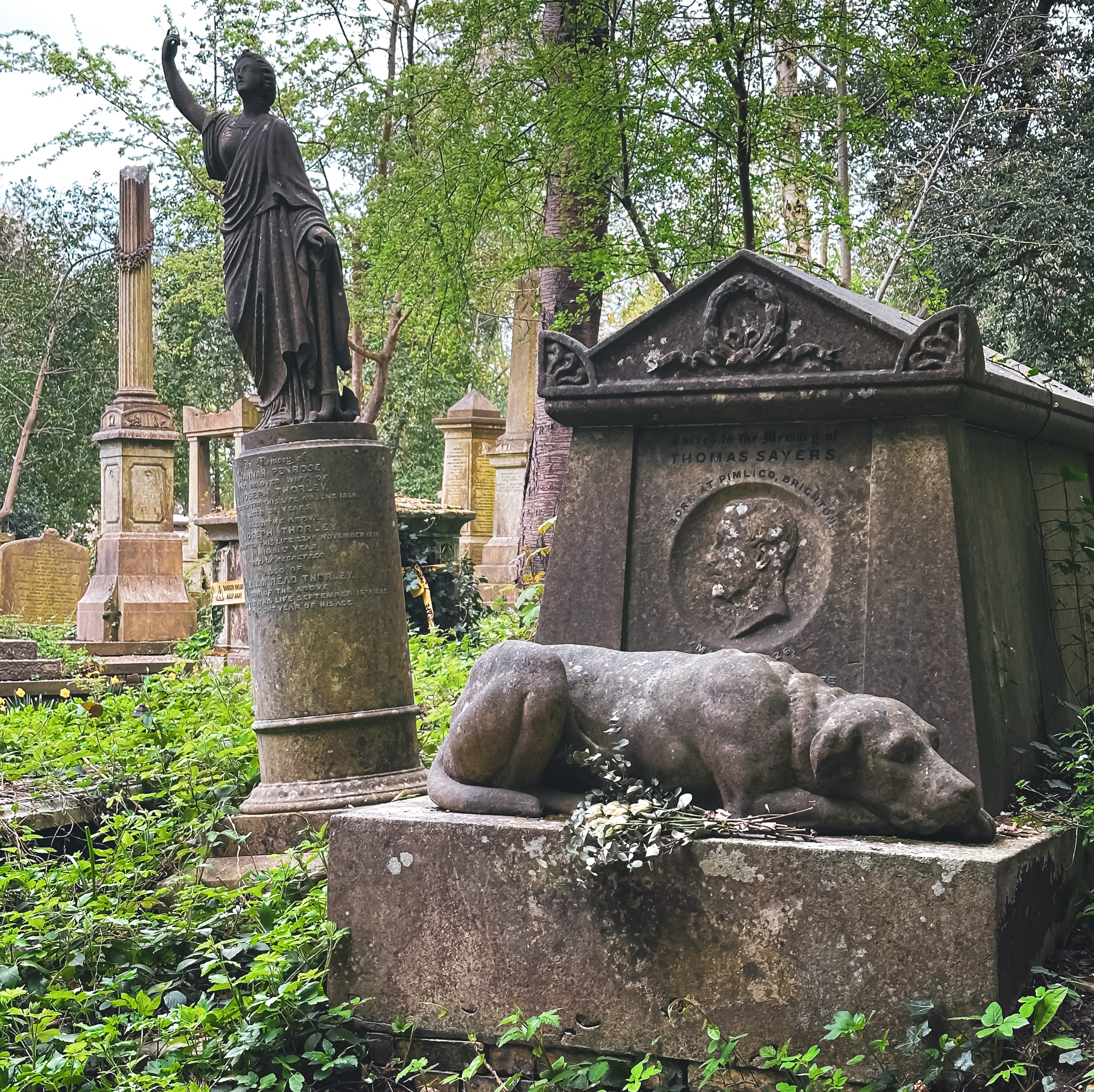
The monuments tell stories in stone. Towering obelisks, weeping angels, and urns draped with carved fabric line the meandering paths. Lions lie in eternal watch at family vaults, and intricate ironwork fences still guard the plots of long-passed Londoners. Each gravestone adorned with symbolism, expanding the history of a grave's inhabitants with simple motifs. Staring at a grave is like a puzzle, weaving together who this person might have been.
Nature, too, plays its part. Creeping ivy and tangled branches soften the grandeur, reminding visitors that time continues, even here. It's a place where human effort and the wild coexist, and where every detail hints at the beliefs, fears, and hopes of a bygone era. Of course, this overgrown feel of the West Cemetery is what gives the place it mystique and charm.
Highgate is divided into two halves. The East Cemetery is open to visitors who want to wander at their own pace, while the West is only accessible by guided tour. If you are interested in the cemetery, the tour is highly recommended. It gives you access to both sides of the cemetery as well as access to the crypts. Our guide was great, pointing out the history and small details throughout the area. We had booked the Highlights Tour ahead of time and joined a small group just before noon. Our guide, both knowledgeable and wry, led us through iron gates and into the shaded, otherworldly paths of the West Cemetery.
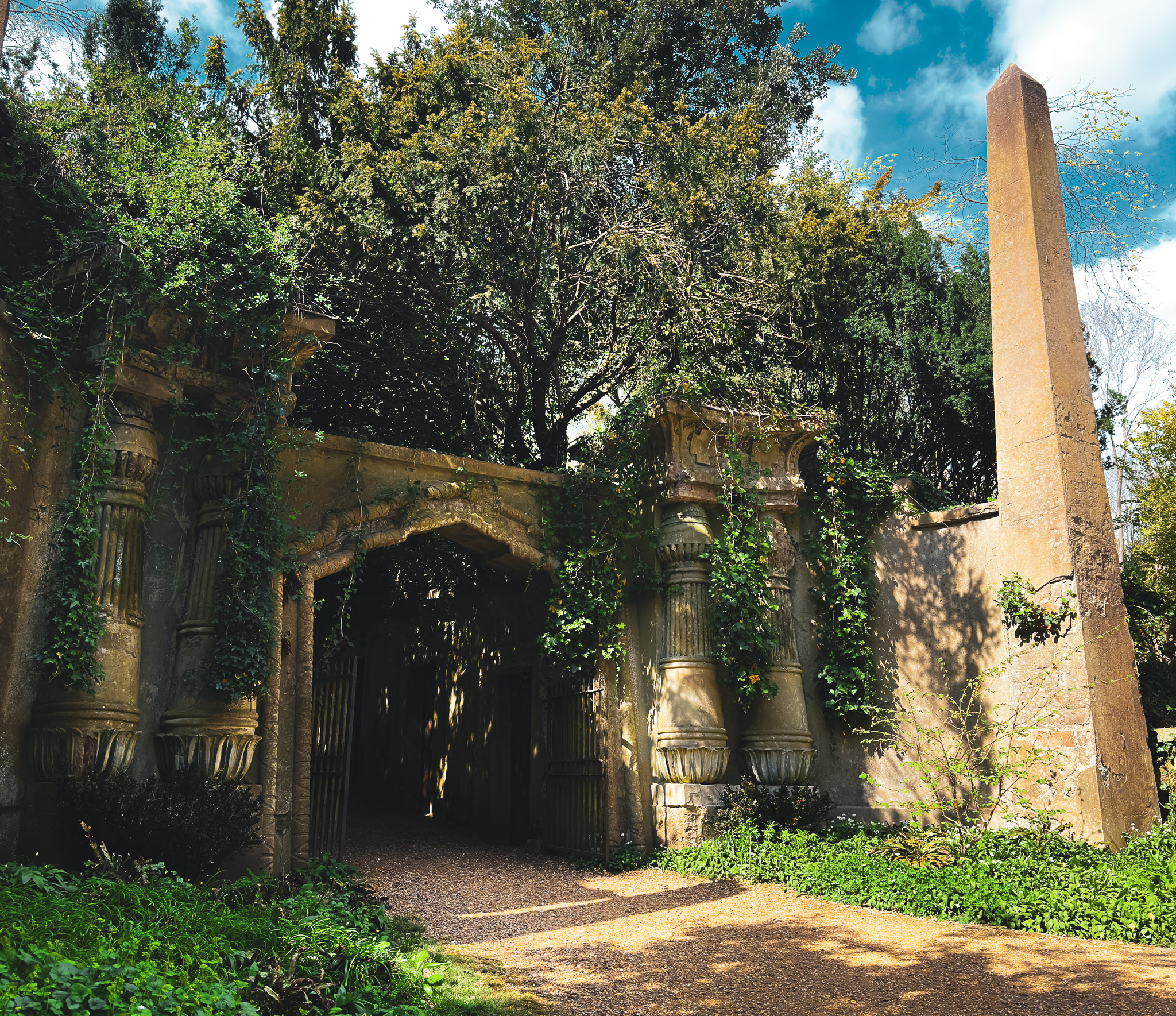
We moved through the cemetery, stopping at the odd grave or two. But one of the big sights was the Egyptian Avenue, a tunnel-like stretch of tombs flanked by looming stone facades. This was a show-stopper, like we were Indiana Jones entering an ancient Egyptian temple. It was followed immediately by the Circle of Lebanon, where I felt transported to Paris crypts. In fact, they used this area as the Paris crypts in Fantastic Beasts: Crimes of Grindelwald. Here at the Circle of Lebanon, a towering cedar anchors a ring of crypts like a natural crown. It is beautiful in the way only places touched by both decay and care can be.
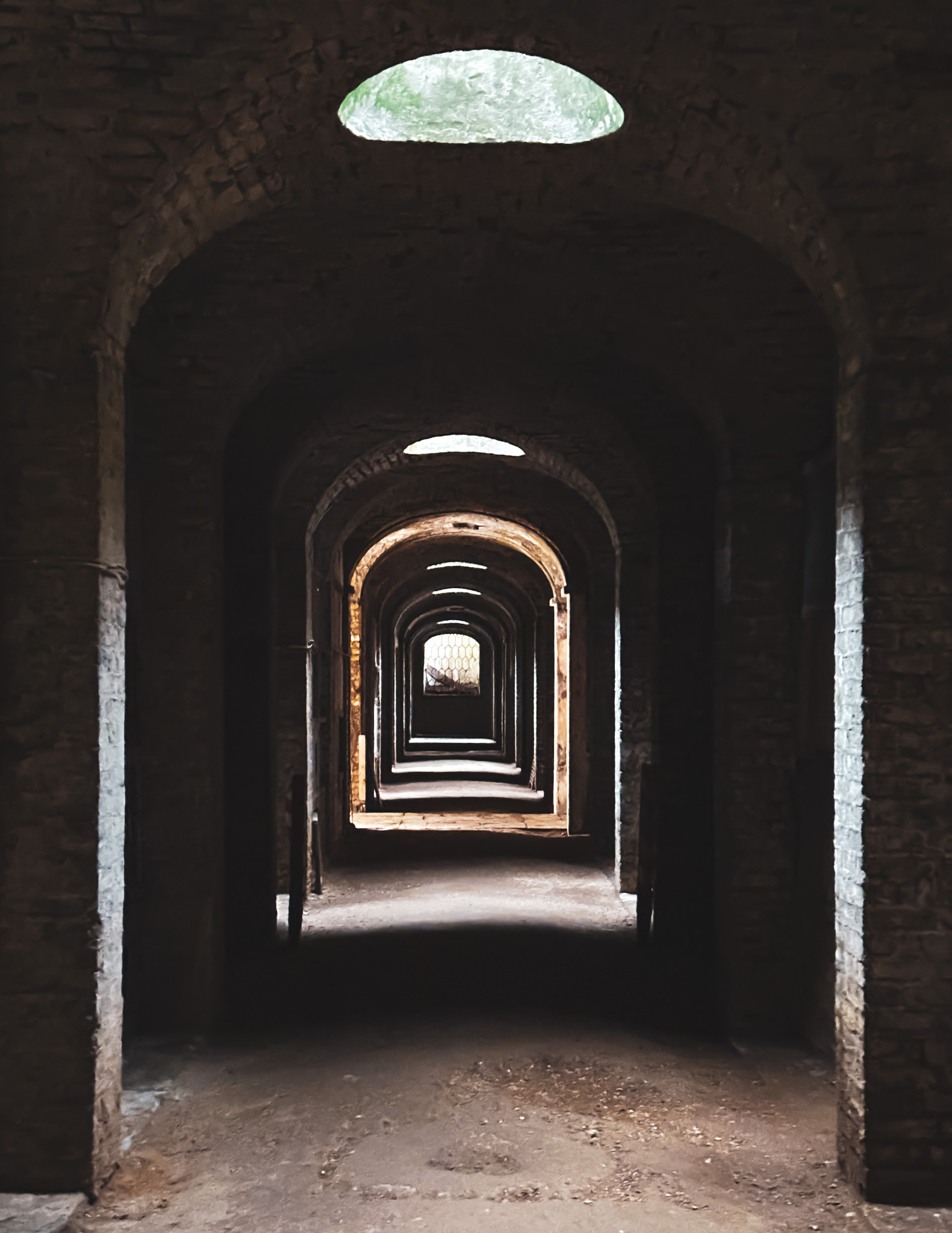
From there, our guide led us to the catacombs. Our tour guide unlocked the giant gate and inside, the air grew noticeably cooler, our voices dropped instinctively to a whisper. The space revealed rows of sealed vaults, each marked with engraved stone plaques, each with its own silent story. The catacombs were lined with dim niches and the echo of footsteps, and the stillness made the space feel suspended in time. Our guide pointed out the architectural details and spoke about burial customs and restoration efforts. Standing there, surrounded by silence and stone, we felt the closeness of history in a way that was both sobering and quietly profound.
The tour ended near the cemetery’s entrance, beside Highgate’s newest mausoleum. It was a sleek, polished contrast to the weathered Victorian monuments surrounding it. Our guide explained how the site is still active, still evolving. Families can still be interred here, though plots are rare and expensive. The modern mausoleum, while modest in scale compared to the grandeur of the past, was a reminder that this place is not only a museum of memory, but also a space that continues to serve the living. The past and present meet here, stone by stone.
Later, we crossed into the East Cemetery. Without a guide, we strolled slowly through the sunlit paths. Names we recognized stood out—Karl Marx with his imposing bronze bust, George Eliot with her simple gravestone, and Douglas Adams, whose fans leave pens and small tributes. But it wasn’t just the famous who held our attention. We paused often, drawn to hand-carved angels and poetry-worn headstones, or to corners where wildflowers pushed up through stone.
There was one quiet spot where a low wall gave way to a view of the tree canopy above. We sat there for a while, not saying much, just letting the warm breeze and birdsong settle around us. It’s rare to find a place that feels so far from the city and yet so close to its history.
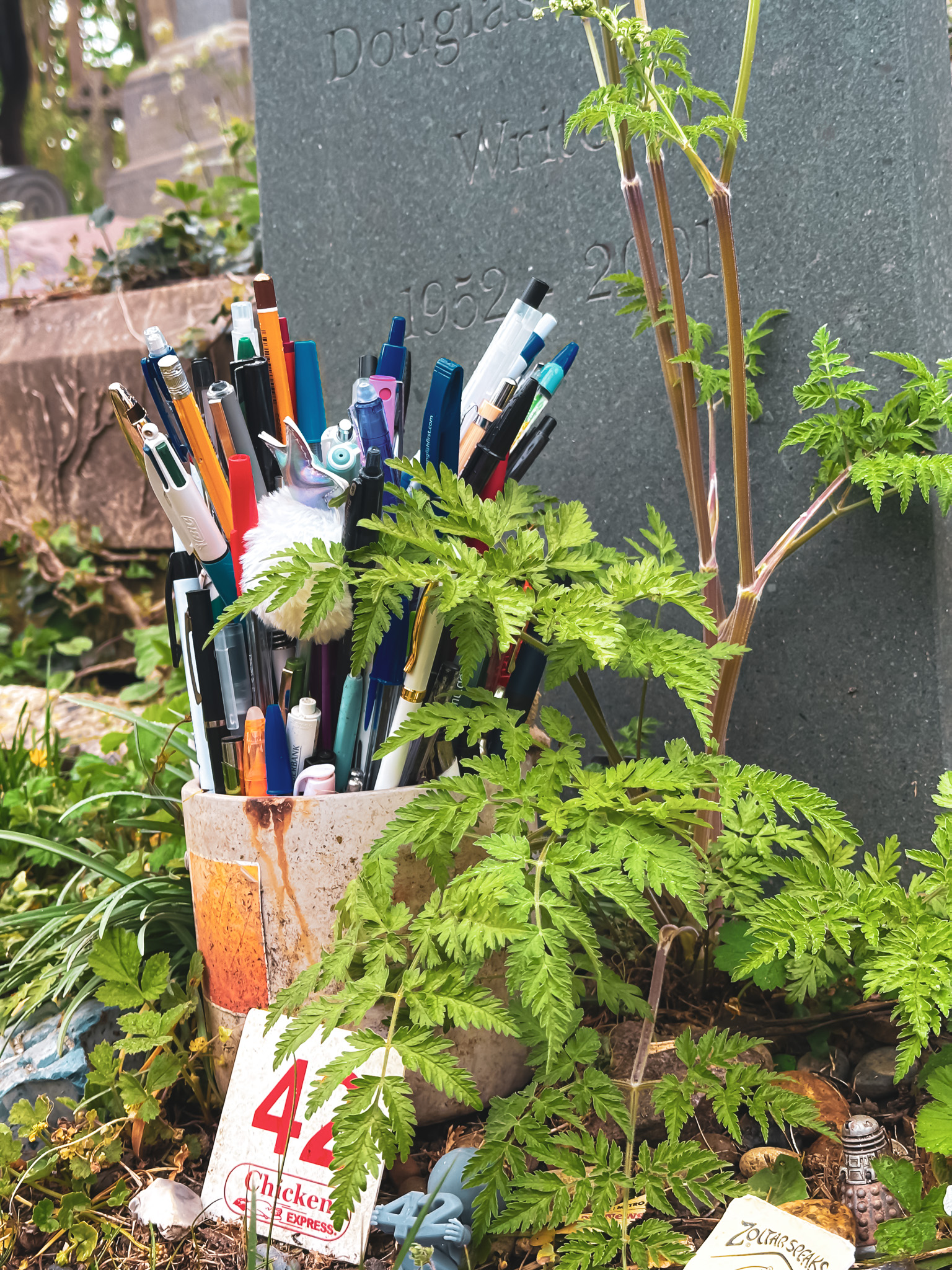
After a few hours, we left the cemetery and wandered into Highgate Village. A cozy bakery with lemon drizzle cake in the window caught our eye, and we lingered over tea and sweets, flipping through the photos we'd taken. The hush of the cemetery still clung to us, not in a somber way, but like a soft echo.
Highgate isn’t a place you check off a list. It’s a place you enter and allow to unfold around you. It slows you down, nudges you into reflection, and surrounds you with stories. For couples, for solo wanderers, for anyone curious about the quiet corners of London’s past, it’s a deeply special place.
If you go, take your time. Bring good shoes, a camera if you’d like, and someone to share the silence with. Highgate doesn’t demand much. It simply invites you to notice.
